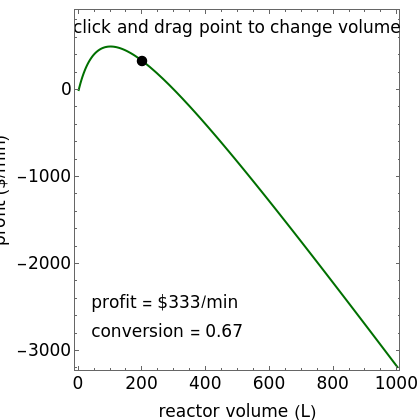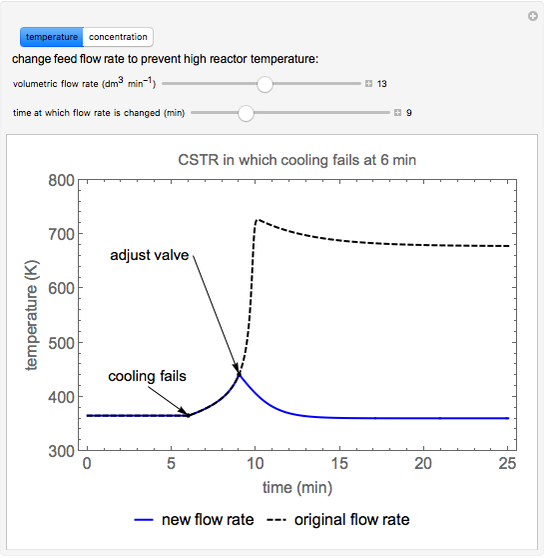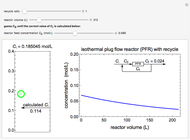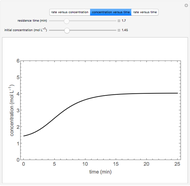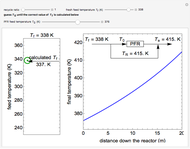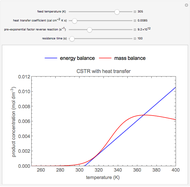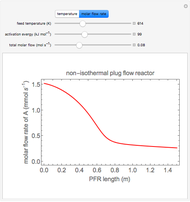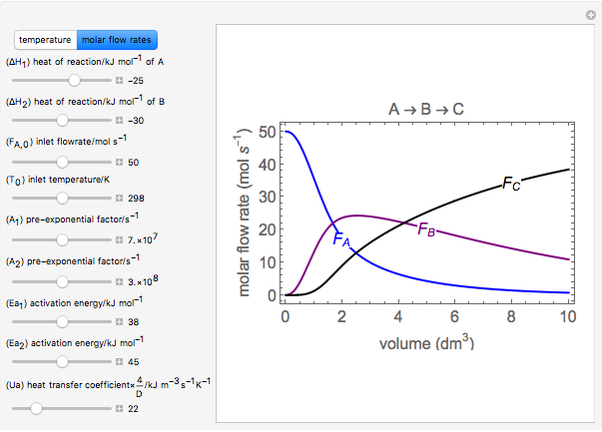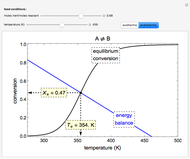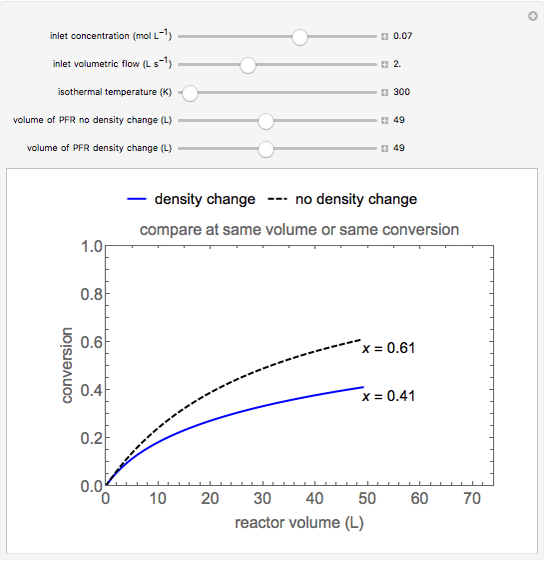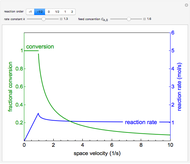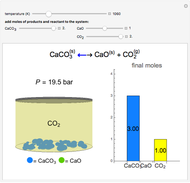Reactor Design Economics

Requires a Wolfram Notebook System
Interact on desktop, mobile and cloud with the free Wolfram Player or other Wolfram Language products.
This Demonstration calculates the monetary profit as a function of reactor volume for a continuous stirred-tank reactor (CSTR) or a plug-flow reactor (PFR). The reaction is either first-order or autocatalytic; set the feed concentrations of reactant and product with sliders. Use sliders to set the value of the product and the costs of the reactant and reactor. Select "concentration" to view the reactant and product concentrations plotted versus reactor volume. The final volume corresponds to the volume at the black dot on the profit plot. Click and drag the black dot on the profit versus reactor volume plot. Check "optimize" to solve for the reactor volume with the highest profit. The separations cost is not considered in this Demonstration, but it can significantly affect profit.
Contributed by: Rachael L. Baumann and Garrison J. Vigil (November 2015)
Additional contributions by: John L. Falconer, Nathan S. Nelson, and Nick Bongiardina
(University of Colorado Boulder, Department of Chemical and Biological Engineering)
Open content licensed under CC BY-NC-SA
Snapshots
Details
The rate of reaction  for a first-order reaction
for a first-order reaction  is given by:
is given by:
 ,
,
and for an autocatalytic reaction it is:
 ,
,
where  is the rate constant (1/min), and
is the rate constant (1/min), and  and
and  are the reactant and product concentrations (mol/L).
are the reactant and product concentrations (mol/L).
A mass balance determines  and
and  for a continuous stirred-tank reactor (CSTR):
for a continuous stirred-tank reactor (CSTR):
 ,
,
 ,
,
where  is the reactor volume (L),
is the reactor volume (L),  is the inlet volumetric flow rate (L/s) and
is the inlet volumetric flow rate (L/s) and  and
and  are the reactant and product feed concentrations (mol/L).
are the reactant and product feed concentrations (mol/L).
For a plug-flow reactor (PFR):
 ,
,
 .
.
Overall conversion  of reactant
of reactant  to product and profit made
to product and profit made  are calculated:
are calculated:
 ;
;
for a CSTR:
 ,
,
for a PFR:
 ,
,
where  ($/mol) and
($/mol) and  ($/[L min]) are the costs of the reactant and reactor and
($/[L min]) are the costs of the reactant and reactor and  ($/mol) is the value of the product.
($/mol) is the value of the product.
Permanent Citation
